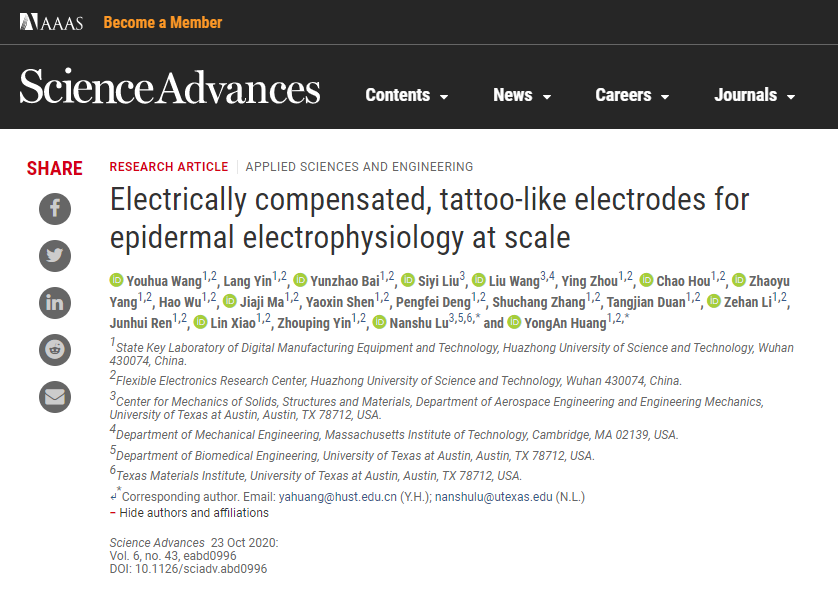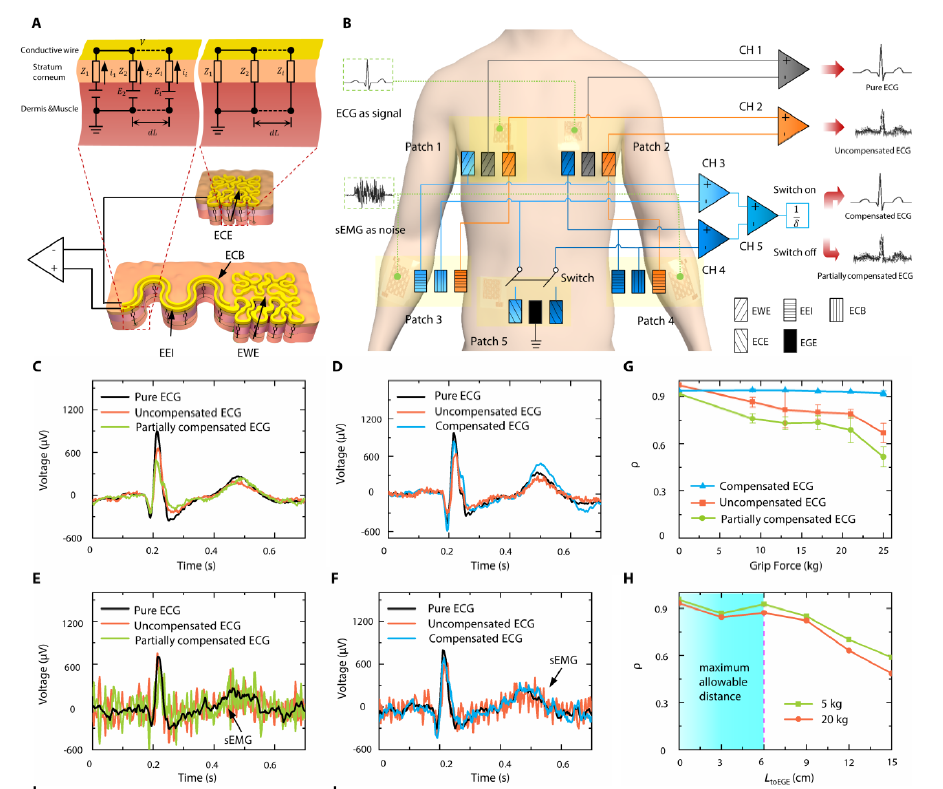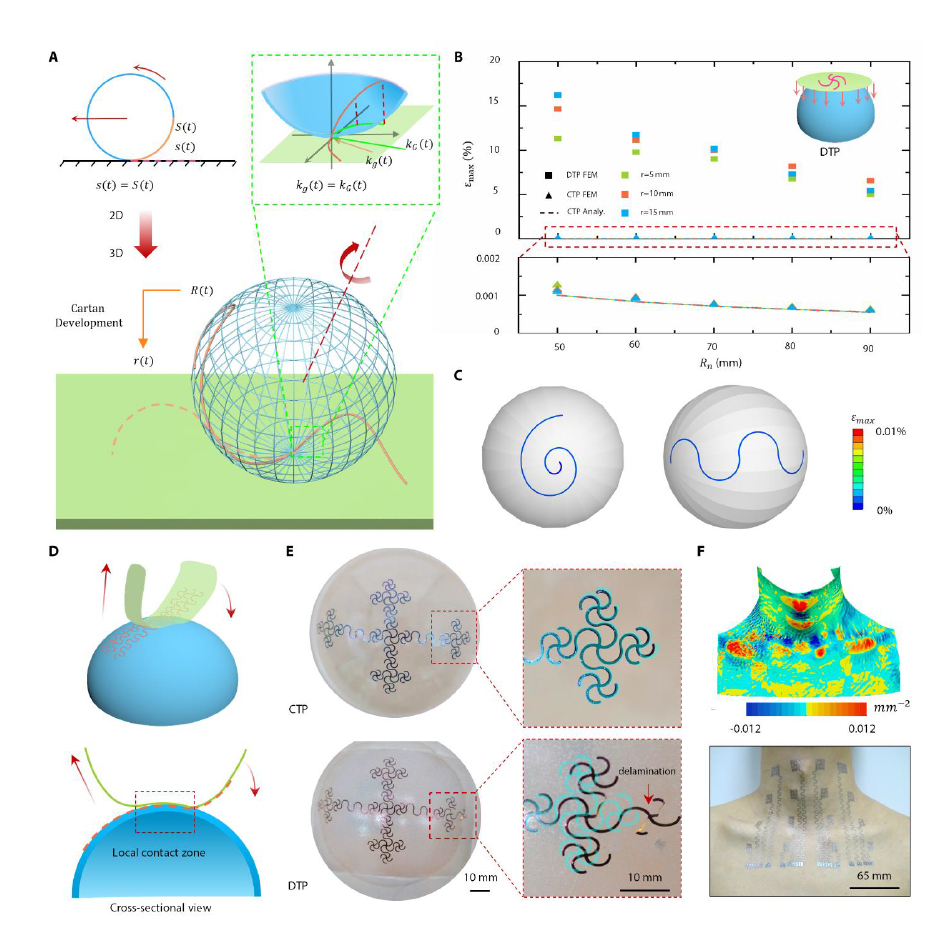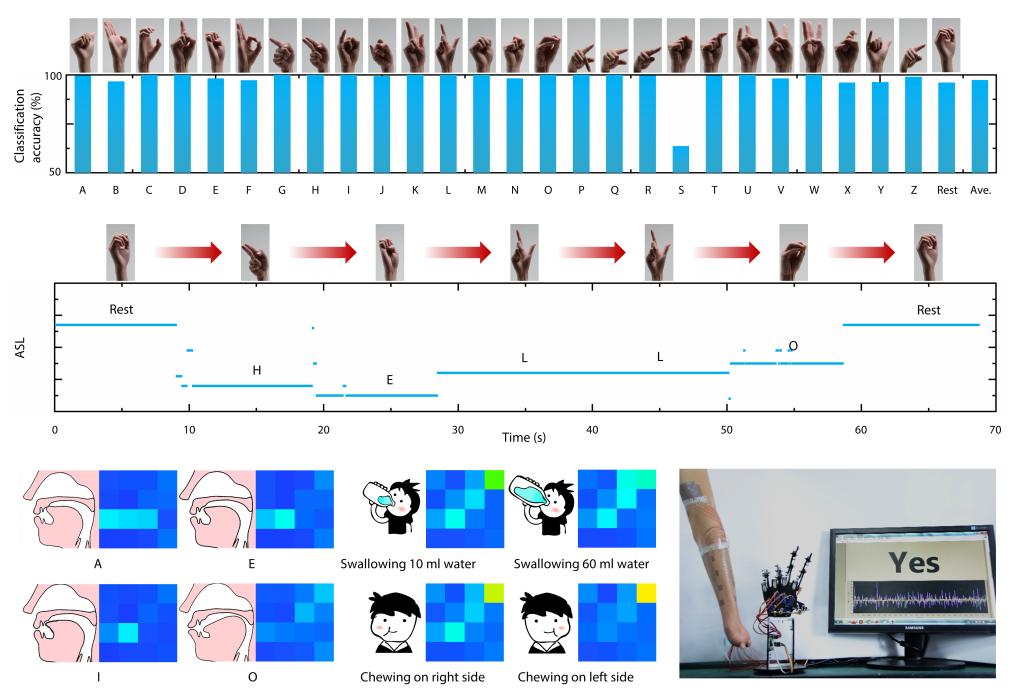On October 23, the research findings “Electrically-compensated, tattoo-like electrodes for epidermal electrophysiology at scale”, for which MSE as the first research unit, was published online in Science Advances, top journal of AAAS. The research was jointly completed by Prof. Huang Yongan’s team of MSE, and Prof. Lu Nanshu’s team of University of Texas at Austin (UT). MSE Doctoral student Wang Youhua was the first author of the paper, while Prof. Huang Yongan and Prof. Lu Nanshu were co-corresponding authors.

As is introduced in the paper, epidermal electrophysiology is widely carried out for disease diagnosis, performance monitoring, human-machine interaction, etc. Compared with thick, stiff, and irritating gel electrodes, emerging tattoo-like epidermal electrodes offer much better wearability and versatility. However, state-of-the-art tattoo-like electrodes are limited in size (e.g., centimeters) to perform electrophysiology at scale due to challenges including large-area fabrication, skin lamination, and electrical interference from long interconnects.

Fig. 1 Illustration of epidermal electrophysiology at scale. The picture shows large-area epidermal electrodes attached on arms, chest and neck.

Fig. 2 Signal compensation model and experimental validation.

Fig. 3 Cartan transfer printing of large-area epidermal electrodes.
Therefore, the two research teams reported large-area, soft, breathable, substrate- and encapsulation-free electrodes designed into transformable filamentary serpentines that can be rapidly fabricated by cut-and-paste method. They proposed a Cartan curve–inspired transfer process to minimize strain in the electrodes when laminated on nondevelopable skin surfaces. Unwanted signals picked up by the unencapsulated interconnects can be eliminated through a previously unexplored electrical compensation strategy. These tattoo-like electrodes can comfortably cover the whole chest, forearm, or neck for applications such as multichannel electrocardiography, sign language recognition, prosthetic control or mapping of neck activities.

Fig. 4 Mechanical, thermal, and electrical characterization of large-area epidermal electrodes.

Fig. 5 Various applications of the large-area epidermal electrodes—sign language recognition, prosthetic control and mapping of neck activities.
This research was supported by the National Natural Science Foundation of China (under grant 51925503 and 51635007), the Program for HUST Academic Frontier Youth Team, US NIH, and US NSF (grant no. 1738293).
Link of the paper:
https://advances.sciencemag.org/content/6/43/eabd0996